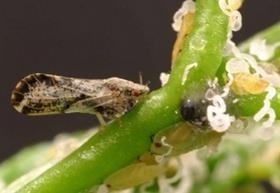
The US Department of Agriculture (USDA) has awarded $20.1m in grants to university researchers for research and extension projects to help citrus producers fight Huanglongbing (HLB), commonly known as citrus greening disease.
This funding is available through the Specialty Crop Research Initiative (SCRI) Citrus Disease Research and Extension Program (CDRE), which was authorised by the 2014 Farm Bill and is administered by USDA's National Institute of Food and Agriculture (NIFA).
'Citrus greening has affected more than 75 per cent of Florida citrus crops and threatens production all across the United States,' said secretary Tom Vilsack. 'The research and extension projects funded today bring us one step closer to providing growers real tools to fight this disease, from early detection to creating long-term solutions for the industry, producers and workers.'
The SCRI program addresses critical needs of the specialty crop industry by awarding grants to support research and extension activities that address key challenges of national, regional, and multi-state importance in sustaining all components of food and agriculture, including conventional and organic food production systems.
Since the SCRI CDRE program's inception in 2014, USDA has granted US$43.6m in research dollars to combat the destructive disease.
HLB was initially detected in Florida in 2005 and has since affected the vast majority of Florida's citrus-producing areas. It has also been detected in Georgia, Louisiana, South Carolina, and Texas and several residential trees in California. It has also been detected in Puerto Rico, the U.S. Virgin Islands, and 14 states in Mexico.
A total of 15 US states or territories are under full or partial quarantine due to the detected presence of the Asian citrus psyllid, a vector for HLB. Those states include Alabama, American Samoa, Arizona, California, Florida, Georgia, Guam, Hawaii, Louisiana, Mississippi, Northern Mariana Islands, Puerto Rico, South Carolina, Texas, and the U.S. Virgin Islands.
Research at the University of Florida and Washington State University will focus on growing the putative pathogenic bacterium in artificial culture, which will greatly facilitate research efforts to manage HLB.
Another project at the University of Florida will develop morpholino-based bactericides to reduce pathogen transmission and eliminate infections in existing trees.
Research at the University of California will use virulence proteins from the pathogen to detect its presence before symptoms appear and to develop strategies for creating citrus rootstocks that are immune to HLB.
Information about all of the projects funded this year can be found online.






No comments yet